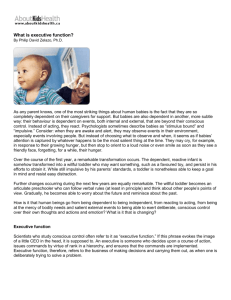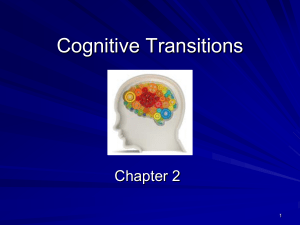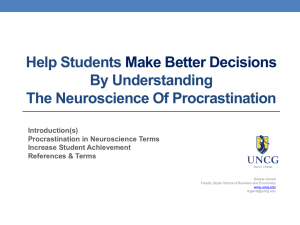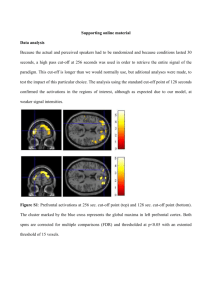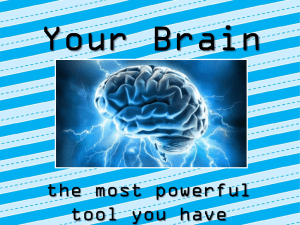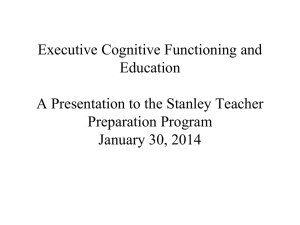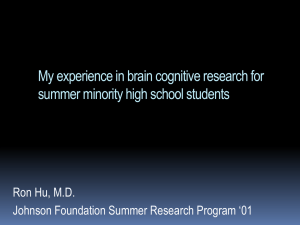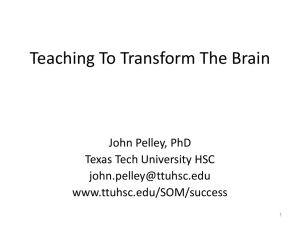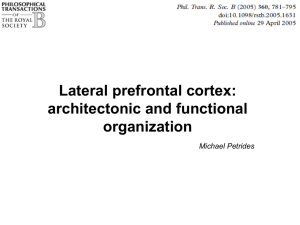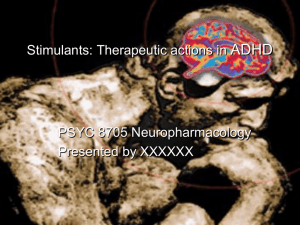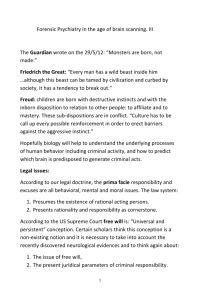Figures and Tables from Chapter 14
advertisement
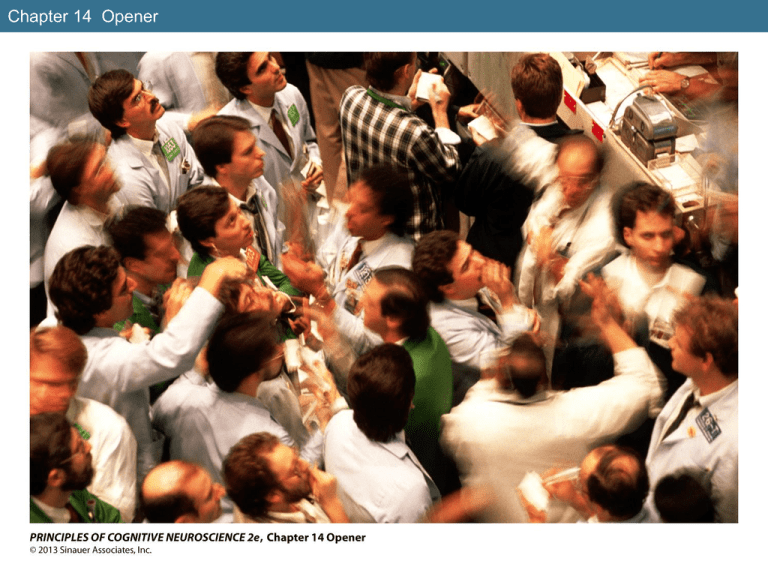
Chapter 14 Opener Introductory Box Addiction to gambling Introductory Box Addiction to gambling (Part 1) Introductory Box Addiction to gambling (Part 2) Figure 14.1 The relation between objective value and subjective value (or utility) Figure 14.1 The relation between objective value and subjective value (or utility) (Part 1) Figure 14.1 The relation between objective value and subjective value (or utility) (Part 2) Figure 14.2 Reference dependence and probability weighting Figure 14.2 Reference dependence and probability weighting (Part 1) Figure 14.2 Reference dependence and probability weighting (Part 2) Figure 14.3 Dopaminergic pathways Figure 14.4 Dopamine neurons are necessary for wanting, not liking Figure 14.4 Dopamine neurons are necessary for wanting, not liking (Part 1) Figure 14.4 Dopamine neurons are necessary for wanting, not liking (Part 2) Figure 14.5 Reward undermining Figure 14.5 Reward undermining (Part 1) Figure 14.5 Reward undermining (Part 2) Figure 14.6 Activity of midbrain dopaminergic neurons in response to expected and omitted rewards Figure 14.6 Activity of midbrain dopaminergic neurons in response to expected and omitted rewards (Part 1) Figure 14.6 Activity of midbrain dopaminergic neurons in response to expected and omitted rewards (Part 2) Figure 14.6 Activity of midbrain dopaminergic neurons in response to expected and omitted rewards (Part 3) Figure 14.7 Reward prediction error Figure 14.8 Rapid prefrontal cortex responses to monetary gains and losses Figure 14.8 Rapid prefrontal cortex responses to monetary gains and losses (Part 1) Figure 14.8 Rapid prefrontal cortex responses to monetary gains and losses (Part 2) Figure 14.9 Distributed influence of reward information throughout the brain Box 14A Learning values and forming habits Box 14A Learning values and forming habits (Part 1) Box 14A Learning values and forming habits (Part 2) Figure 14.10 Identification of dopamine neurons that respond to both positive and aversive events Figure 14.10 Identification of dopamine neurons that respond to both positive and aversive events (Part 1) Figure 14.10 Identification of dopamine neurons that respond to both positive and aversive events (Part 2) Figure 14.10 Identification of dopamine neurons that respond to both positive and aversive events (Part 3) Figure 14.11 Brain regions associated with risk Figure 14.12 Decision making in the face of economic ambiguity Figure 14.12 Decision making in the face of economic ambiguity (Part 1) Figure 14.12 Decision making in the face of economic ambiguity (Part 2) Figure 14.13 Temporal discounting Figure 14.13 Temporal discounting (Part 1) Figure 14.13 Temporal discounting (Part 2) Figure 14.13 Temporal discounting (Part 3) Figure 14.14 Trading social rewards for juice in a pay-per-view task Figure 14.14 Trading social rewards for juice in a pay-per-view task (Part 1) Figure 14.14 Trading social rewards for juice in a pay-per-view task (Part 2) Figure 14.15 Brain regions associated with prosocial behavior Figure 14.15 Brain regions associated with prosocial behavior (Part 1) Figure 14.15 Brain regions associated with prosocial behavior (Part 2) Figure 14.15 Brain regions associated with prosocial behavior (Part 3) Figure 14.16 Some commonly studied games Figure 14.16 Some commonly studied games (Part 1) Figure 14.16 Some commonly studied games (Part 2) Figure 14.16 Some commonly studied games (Part 3) Figure 14.17 The neural correlates of trust in decision making Figure 14.17 The neural correlates of trust in decision making (Part 1) Figure 14.17 The neural correlates of trust in decision making (Part 2) Figure 14.17 The neural correlates of trust in decision making (Part 3) Figure 14.17 The neural correlates of trust in decision making (Part 4) Figure 14.17 The neural correlates of trust in decision making (Part 5) Figure 14.17 The neural correlates of trust in decision making (Part 6) Figure 14.18 Disruption of processing in dorsolateral prefrontal cortex (DLPFC) increases acceptance of unfair offers in the ultimatum game Figure 14.18 Disruption of processing in dorsolateral prefrontal cortex (DLPFC) increases acceptance of unfair offers in the ultimatum game (Part 1) Figure 14.18 Disruption of processing in dorsolateral prefrontal cortex (DLPFC) increases acceptance of unfair offers in the ultimatum game (Part 2) Figure 14.19 The prefrontal cortex integrates information in perceptual decisions Figure 14.19 The prefrontal cortex integrates information in perceptual decisions (Part 1) Figure 14.19 The prefrontal cortex integrates information in perceptual decisions (Part 2) Figure 14.20 Changes in decisionmaking behavior following brain lesions Figure 14.20 Changes in decisionmaking behavior following brain lesions (Part 1) Figure 14.20 Changes in decisionmaking behavior following brain lesions (Part 2) Box 14B Modeling simple decisions Box 14B Modeling simple decisions (Part 1) Box 14B Modeling simple decisions (Part 2) Figure 14.21 Responses of orbitofrontal cortex neurons to the value of fluid rewards Figure 14.22 Activation in posterior ventromedial prefrontal cortex (vmPFC) is associated with willingness to pay Figure 14.22 Activation in posterior ventromedial prefrontal cortex (vmPFC) is associated with willingness to pay (Part 1) Figure 14.22 Activation in posterior ventromedial prefrontal cortex (vmPFC) is associated with willingness to pay (Part 2) Figure 14.23 Framing effects in decision making Figure 14.24 Activation in dorsomedial prefrontal cortex (dmPFC) associated with counterframe choices Figure 14.24 Activation in dorsomedial prefrontal cortex (dmPFC) associated with counterframe choices (Part 1) Figure 14.24 Activation in dorsomedial prefrontal cortex (dmPFC) associated with counterframe choices (Part 2) Figure 14.25 Studies of cognitive functions picked up by the popular media often lead to sensationalism Box 14C Neuromarketing
